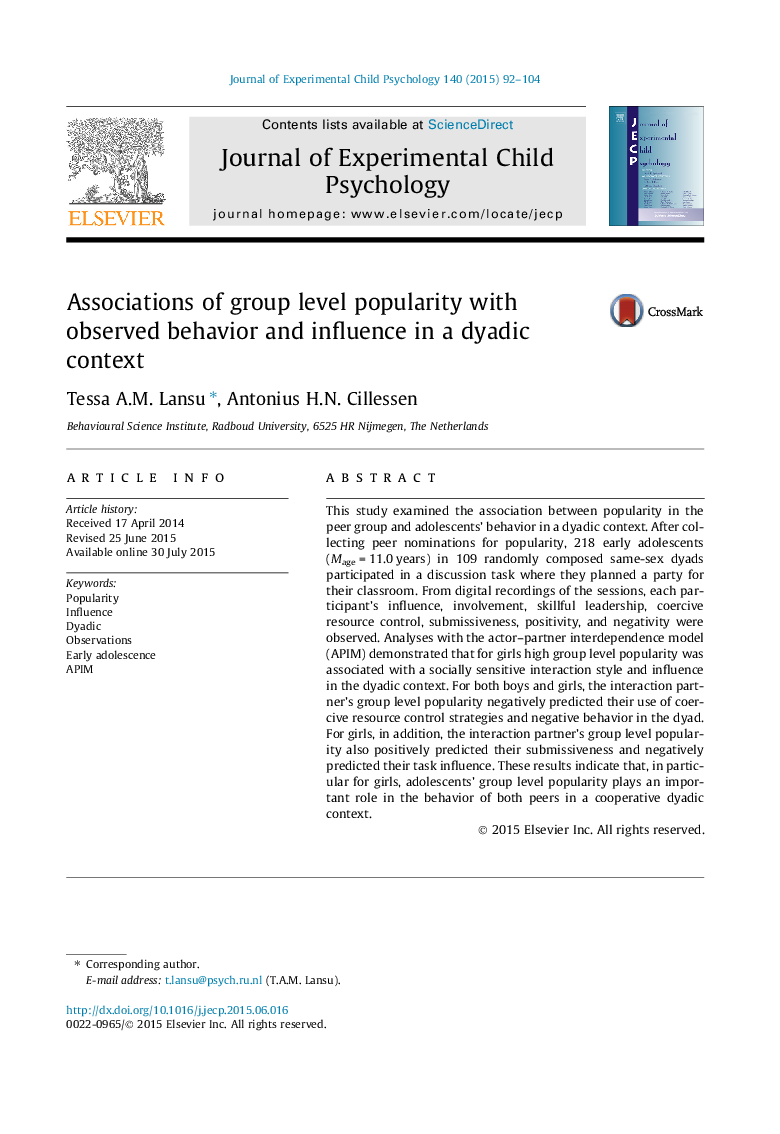| کد مقاله | کد نشریه | سال انتشار | مقاله انگلیسی | نسخه تمام متن |
|---|---|---|---|---|
| 917881 | 1473472 | 2015 | 13 صفحه PDF | دانلود رایگان |
• Popularity in the peer group plays a role in observed dyadic social interactions.
• Girls’ popularity is associated with leadership and influence in the dyad.
• Boys’ and girls’ popularity is also associated with compliance in their dyad partner.
• Popularity especially plays an important role in dyadic interactions for girls.
This study examined the association between popularity in the peer group and adolescents’ behavior in a dyadic context. After collecting peer nominations for popularity, 218 early adolescents (Mage = 11.0 years) in 109 randomly composed same-sex dyads participated in a discussion task where they planned a party for their classroom. From digital recordings of the sessions, each participant’s influence, involvement, skillful leadership, coercive resource control, submissiveness, positivity, and negativity were observed. Analyses with the actor–partner interdependence model (APIM) demonstrated that for girls high group level popularity was associated with a socially sensitive interaction style and influence in the dyadic context. For both boys and girls, the interaction partner’s group level popularity negatively predicted their use of coercive resource control strategies and negative behavior in the dyad. For girls, in addition, the interaction partner’s group level popularity also positively predicted their submissiveness and negatively predicted their task influence. These results indicate that, in particular for girls, adolescents’ group level popularity plays an important role in the behavior of both peers in a cooperative dyadic context.
Journal: Journal of Experimental Child Psychology - Volume 140, December 2015, Pages 92–104
